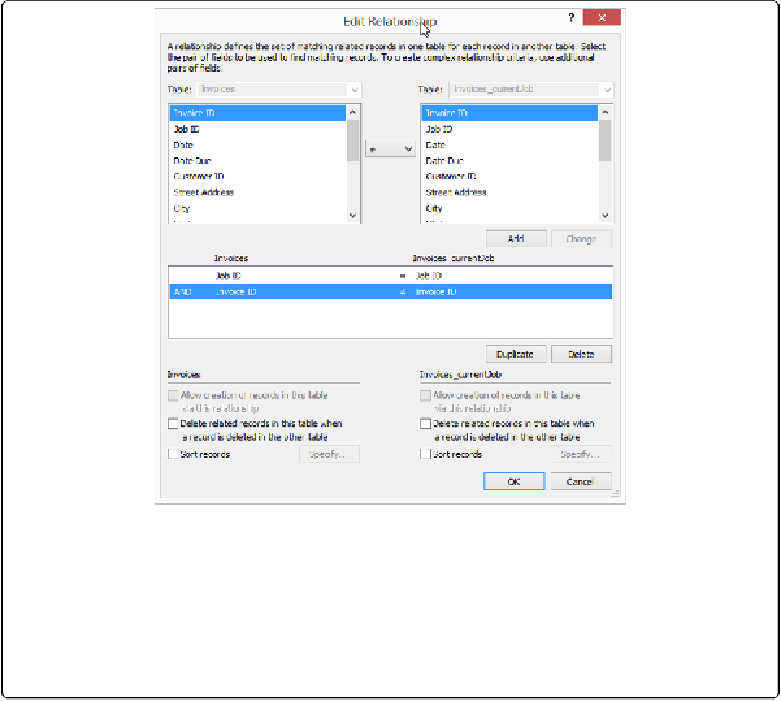Database Reference
In-Depth Information
Figure 14-3. This is a relationship with two criteria, sometimes called a multi-key (or multi-predic-
ate) relationship, because it uses two sets of key fields in its definition. Notice the “AND” in front
of the second criterion. In order for two records to relate, they have to meet both criteria. If you
wanted to translate this relationship's description into words, you could say something like, “Show
all records where the Job ID matches AND where the Invoice ID does not match.” It doesn't quite
trip off the tongue, but it's accurate. Multiple criteria relationships are always AND conditions,
never OR.
And you thought you'd only ever need one table occurrence for any particular table. You
have three Invoice TOs on your graph, and you've only just started finding reasons to create
new ones. Later in this chapter, you'll learn a better way to control what shows up in a portal,
and you'll learn some techniques for organizing a graph when TOs start to multiply like rab-
bits.

